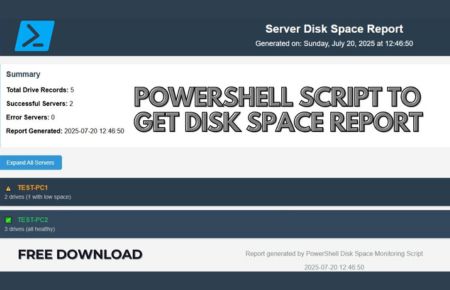In the vast digital landscape where cyber threats lurk like shadows in the dark, safeguarding our information remains an ongoing challenge. However, amidst these challenges, we find a stalwart defender known as SELinux, or Security-Enhanced Linux, diligently watching over systems powered by CentOS, a renowned Linux distribution.
The Genesis of SELinux: A Collaboration for Security
SELinux emerged from a collaboration between the National Security Agency (NSA) and Red Hat in the early 2000s. Their joint effort aimed to fortify Linux systems by introducing additional layers of protection, marking a significant milestone in enhancing cybersecurity measures.
Understanding SELinux’s Core Principle: Least Privilege
At its core, SELinux operates on the principle of least privilege, ensuring that users and programs are granted access only to the resources essential for their designated tasks. By limiting unnecessary permissions, SELinux reduces the risk of potential security breaches, bolstering the overall resilience of the system.
Enforcing Security Policies with SELinux
SELinux enforces security policies through meticulously crafted rules, known as policies, which govern the interactions within the system. These policies dictate the permissible actions related to accessing files, directories, network ports, and system services, serving as a vigilant gatekeeper against unauthorized activities.
Modes of Operation in CentOS: Enforcing, Permissive, and Disabled
CentOS offers three operational modes for SELinux: enforcing, permissive, and disabled. In enforcing mode, SELinux actively implements security policies, thwarting unauthorized actions and maintaining a comprehensive log of system activities. Permissive mode, in contrast, allows policy violations while logging them for analysis, offering valuable insights for troubleshooting. Disabled mode, though tempting, completely deactivates SELinux, exposing the system to potential vulnerabilities.
SELinux in Action: Protecting Against Intruders
Imagine a scenario where a malicious entity attempts to breach a CentOS server. SELinux stands as an impenetrable barrier, denying unauthorized access and safeguarding the system’s integrity. With its vigilant oversight and unwavering resolve, SELinux repels malicious intrusions, preserving the sanctity of the system.
Benefits of SELinux Integration in CentOS
The integration of SELinux into CentOS yields numerous benefits for users. It provides enhanced protection against zero-day exploits, reduces the attack surface, and ensures compliance with regulatory standards. Moreover, SELinux fosters a culture of security consciousness, instilling confidence among CentOS users in the robustness of their systems’ defenses.
Embracing SELinux: Empowering CentOS Users
While SELinux may initially seem daunting, its adoption signifies a step towards a safer digital future for CentOS systems. By understanding SELinux’s intricacies and harnessing its capabilities, CentOS users can fortify their digital infrastructure and mitigate cybersecurity risks effectively.
SELinux as a Beacon of Cybersecurity Hope
In the dynamic realm of cybersecurity, SELinux emerges as a beacon of hope, symbolizing resilience and commitment to safeguarding digital realms. Its integration into CentOS underscores a dedication to fortifying systems against the ever-evolving landscape of cyber threats.
Enhance Protection for Example
Denying Unauthorized Access
Imagine a CentOS server hosting a critical database containing sensitive information. A malicious actor attempts to exploit a vulnerability in an application running on the server to gain unauthorized access to the database. However, SELinux, operating in enforcing mode, scrutinizes the attempted intrusion and detects the unauthorized access attempt.
With its finely tuned policies, SELinux promptly denies the malicious process access to the database, thwarting the attacker’s efforts and safeguarding the integrity of the sensitive data.
Containing Web Application Vulnerabilities
Consider a CentOS server running a web application susceptible to SQL injection attacks. Without SELinux, a successful exploit of this vulnerability could result in the compromise of the entire server, potentially leading to data breaches and service disruptions.
However, with SELinux’s mandatory access controls in place, even if the web application is compromised, SELinux confines the attacker’s actions within predefined boundaries. As a result, the impact of the breach is limited, preventing further exploitation of system resources and minimizing the damage inflicted by the attack.
Enhancing Network Security
In a CentOS environment hosting multiple network services, SELinux plays a pivotal role in safeguarding network communications. Let’s say an unauthorized user attempts to exploit a vulnerable network service to gain unauthorized access to the server.
SELinux, operating in enforcing mode, meticulously evaluates the attempted network interaction against its security policies. If the interaction violates the established policies, SELinux promptly intervenes, blocking the unauthorized access attempt and logging the incident for further analysis. As a result, SELinux fortifies the server’s defenses against network-based attacks, ensuring the integrity and confidentiality of sensitive data.
Mitigating Insider Threats
Even trusted users within a CentOS environment can pose security risks if their actions are not adequately controlled. Consider a scenario where a legitimate user inadvertently executes a malicious script intended to exfiltrate sensitive data from the system. In the absence of SELinux, the malicious script could execute undetected, potentially causing irreparable harm.
However, with SELinux enforcing stringent access controls, the malicious script’s attempts to access sensitive files are thwarted, preventing the exfiltration of data and mitigating the insider threat. By confining user actions within predefined boundaries, SELinux serves as a vigilant guardian, protecting the system from both external attackers and internal threats.
Safeguarding System Integrity
In a CentOS server hosting critical system files and configurations, any unauthorized modifications pose a significant risk to system integrity. Suppose a malicious actor gains unauthorized access to the server and attempts to tamper with system files to escalate privileges or install malicious software. SELinux, operating in enforcing mode, diligently monitors system interactions and detects the unauthorized modification attempts.
By enforcing strict access controls and preventing unauthorized modifications to system files, SELinux preserves the integrity of the CentOS server, thwarting attempts to compromise its security and ensuring the system remains resilient against adversarial threats.
Sample Configuration for Enhance Security
Below is a sample SELinux configuration for enhancing security on a CentOS system. This configuration is designed to strike a balance between security and usability, providing robust protection while minimizing disruptions to system functionality
Restricting Access to Sensitive Directories
# Define SELinux policy rules to restrict access to sensitive directories.
# Example: Deny read/write access to /etc/shadow to prevent unauthorized access.
deny httpd_t etc_shadow_t:file { read write };
Securing System Log Files
# Configure SELinux policy rules to protect system log files from tampering.
# Example: Allow read/write access to /var/log/messages only for the syslogd process.
allow syslogd_t var_log_t:file { read write };
Securing User Home Directories
# Define SELinux policy rules to protect user home directories from unauthorized access.
# Example: Allow read/write access to user home directories only for the user and relevant system services.
allow user_home_t user_home_t:file { read write };
Securing System Executables
# Configure SELinux policy rules to protect system executables from unauthorized modifications.
# Example: Allow read/execute access to system executables only for relevant system services.
allow systemd_exec_t bin_t:file { read execute };
Restricting Network Access for Services
# Define SELinux policy rules to restrict network access for specific services.
# Example: Allow HTTPd to only connect to specific network addresses.
allow httpd_t specific_network_t:tcp_socket { connect };
Isolating Containerized Applications
# Configure SELinux policy rules to isolate containerized applications. # Example: Define separate SELinux contexts for each container to prevent cross-container attacks. container_use_label container_t:container_runtime_t;
Securing SSH Configuration Files
# Define SELinux policy rules to protect SSH configuration files.
# Example: Allow read/write access to SSH configuration files only for the SSH daemon.
allow sshd_t etc_ssh_t:file { read write };
Securing Cron Jobs
# Configure SELinux policy rules to secure cron jobs from unauthorized access.
# Example: Allow read/write access to cron configuration files only for the cron daemon.
allow crond_t cron_var_spool_t:file { read write };
These sample configurations illustrate various ways SELinux can be leveraged to enhance security on a CentOS system by restricting access to sensitive resources, securing system files, isolating services, and protecting against unauthorized modifications and access. Each configuration can be tailored to suit specific security requirements and system environments.
Conclusion
In summary, let’s welcome SELinux as a reliable partner in our efforts to stay secure online. With SELinux watching over us, we can explore the internet knowing our systems are strong and can withstand any attacks.
A big thank you for exploring TechsBucket! Your visit means a lot to us, and we’re grateful for your time on our platform. If you have any feedback or suggestions, we’d love to hear them. Looking forward to serving you again soon!


